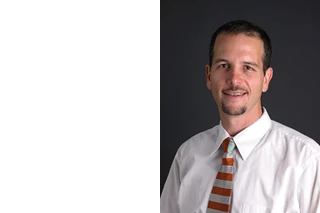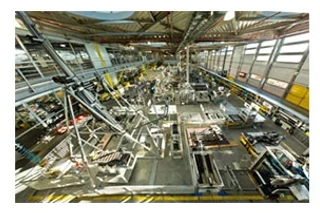Change Language :

Tested: Twisted 27 million times ... from stock

chainflex® Test Report
Turning 27 million times without breaking
Rugged torsionable fiber optic cables for three-dimensionally moving energy chains
Industrial robots are indispensable tools in modern automation applications. Indispensable also means that they must function reliably and that in turn requires the smooth operation of all the components, particularly the data cables they contain.
[Uncover linktext="Read more ..."]Under the brand name "chainflex® CFROBOT", igus® develops fiber optic cables specifically for the use in three-dimensional energy supply systems, which withstand torsion that go beyond the requirements of standard norms. Their durability and trouble-free operation have been proven now in special endurance tests in the igus® laboratory.
Glass fiber optic cable for torsion applicationsThe general advantages of fiber optic data transmission compared to copper-based solutions are well known: Copper cables are limited in transmission lengths and rates for physical reasons. Accelerated aging processes of copper by the continuous movement and the susceptibility to electromagnetic interferences, which can only be reduced by elaborate shields, are additional disadvantages of copper-based compounds. The latter mainly concerns torsion applications, which particularly stress the shielding. Many of these problems can be eliminated from the beginning with special glass fiber optic cables. Moreover, these cables are suitable for every transfer or bus system, provided the proper converter is used.
Long lasting at +/-180° torsionUnder the name "CFROBOT", igus® offers cables suitable for continuous motion for use in energy chains or other three-dimensional torsion applications. The rugged glass fiber optic cables of the CFROBOT family are available optionally in versions with 62.5/125 µm or 50/125 µm gradients with two fibers. They consist of two aramid-protected fixed cores that are braided in matched lay length around a GRP central element with additional aramid-filled damping wires. The TPE outer jacket extruded over special liners, tested and proven in "chainflex®" cables, provides the necessary mechanical protection against abrasion and the unwanted buckling of the cable. For all the flexibility needed to execute the 3D motion, a certain rigidity and mechanical protection must be ensured reliably. "CFROBOT" FOC run successfully in the igus® endurance test and have, for example, till today already completed more than 27 million cycles successfully with a torsion cable length of 1 m and a torsion angle of +/-180°.
The FOC from the CFROBOT family offer significant advantages to users: they are suitable for all systems independent of the bus system. Their resistance to electromagnetic interference, high data security and small bending radii as well as transmission lengths of several hundred meters are among the key product features.
Example: CFROBOT 5The torsionable fiber optic cable is ideal for continuous movement in three-dimensional "energy chains", such as the "triflex® R" series from igus®. Its TPE outer jacket makes the robot cable almost universally applicable regardless of the environmental conditions: it withstands oil, organic oil and UV radiation without any problems, is cold flexible and resists hydrolysis and microbes. In addition the special areas of the rugged fiber optic cable include small radii from 4xd, speeds up to 10 m/s and long, even unsupported travels.
chainflex® Test Video
Test number: 3105
Cable types: CFROBOT5.501
Test parameters: Torsion test +/- 180°
Service Live: 27,542,214 Cycles
chainflex® Test Set-up

- Robot FOC CFROBOT5.501 glass fiber cable withstands more than 28 million cycles at +/- 180°/ft torsion
- chainflex® works - Proven in Test No. 3105 of more than 600 parallel experiments in the 18,840 sq. ft. test lab for flexible cables.
- Calculated online
Proven quality

I guarantee that!
In the igus® in-house laboratory, constant series of tests are conducted under the most difficult conditions in order to give you reliable information about the suitability of our cables for your application. Would you like to learn more about it? Contact igus® Phone: 800-521-2747
chainflex® test laboratory for flexible cables

igus®, as a system supplier of energy chains and chainflex® cables for use in constantly moving energy supply systems, has been operating an extensive test lab for over 20 years.
The chainflex® lab focuses on special trials and tests that are not covered by applicable standards and labs, which are essential for determining the service life and function of moving cables.[Uncover linktext="Continue reading..."]
There have been and continue to be a virtually infinite number of cable suppliers who also sell cables for the so-called "chain compatible" market. But customers are increasingly confronted with the question to what extent these cables are genuinely suited for the application, and at what point they need to anticipate a malfunction. The tests and inspections frequently taken from the standards only apply in the rarest of cases to the specific customer requirements, since these specific requirements cannot ultimately be described with standards.
The igus® lab is dedicated precisely to these customer requirements. Through its involvement with committees that are responsible for publishing standards and/or regulations, such as VDE and UL, igus® has created tests and production standards for chainflex® cables that properly address the actual requirements for cables in continuously moving applications.
In doing so, igus® differentiates between fundamentally different tests and evaluations:
1. Materials testing: In accordance with customer requirements, new materials are being developed for conductors, insulation, or jacket materials, etc. This involves developing significant differences that are not immediately apparent, specifically for conductors and jacket materials. Tests refer to up to eight different chainflex® standards.
2. Design validations: This involves the systematic evaluation of new fixtures, production processes, and the related impact on service life. In the past, these reviews in particular have demonstrated that ostensibly equivalent production processes can nevertheless result in significant differences in moving applications.
3. In-process quality testing: In accordance with certain selection algorithms, cables are randomly selected after production has been completed and subjected to standard tests customarily used for cable production and special igus® tests. The lab may test up to 10% of all produced cables in long-term bending tests, and performs the required structural examinations.
4. Service life endurance testing: These test projects may need to allocate up to 4 years, and examine the actual maximum service life of selected cables.
The key in this case is to consistently monitor the parameters, in order to recognize failure at the right point in time.
5. Customer-specific applications: A special service consists of customer-specific testing in accordance with igus® standards.
These tests are based on customer specific motion sequences of the application, and, in the case of particularly critical applications, have the significant advantage that the tests can define the limits and any available optimizations before mass production begins.
The chainflex® lab Of course a variety of conditions need to be met so that the aforementioned tests are conducted in a purposeful, systematic, and reproducible manner.
In addition to the igus® testing standards, which establish specific rules for the tests and ensure comparability, the necessary framework conditions must be created. The 18,840 sq. ft. lab addresses these conditions:
The lab team has more than 50 different test rigs and machines at its disposal. A wide variety of travel distances (ranging from 1 foot to 394 feet) are available; in addition, horizontal and suspended applications can also be implemented.
Torsion test rigs with 12 triflex® multi-axis cable carriers provide a host of testing options and expand the torsion test product range, which is rounded out by four different six axis robots.
Special purpose testing stations for wear and media testing, which test under significantly more realistic testing conditions than the exposure and aging tests conducted based on UL or VDE, are specifically used for materials development. These have significantly contributed to the fact that igus® outer jacket materials are more specifically tuned to the materials in energy supply systems, therefore guaranteeing the best possible reliability.
Frequently underestimated thermal influences on moving cables can be tested at temperature cycles ranging from -40° F to 140° F in a special cooling container that is equipped with a 23 foot long axis.
This provides the significant advantage that the user does not have to strictly rely on the conventional winding mandrel test in accordance with VDE, but that aging can also be tested under continuous motion in a variety of different temperature cycles. For the purposes of these tests, the 23 foot long cable carrier axis can be operated with a variety of different radii and chain types.
Naturally, all tests currently being conducted on more than 600 test cables are systematically and effectively documented. After all, these 600 test cables quickly mean that approximately 5000 measurement locations need to be continuously monitored.
This early detection – without destructive testing – is particularly important when drawing conclusions about any required adjustments. After the test is concluded, all cables are disassembled into their constituent components in accordance with specified sequences, and tested and documented in detail.
This permits qualified assessments for all chainflex® cables, and provides the user with planning reliability for his cable selection.